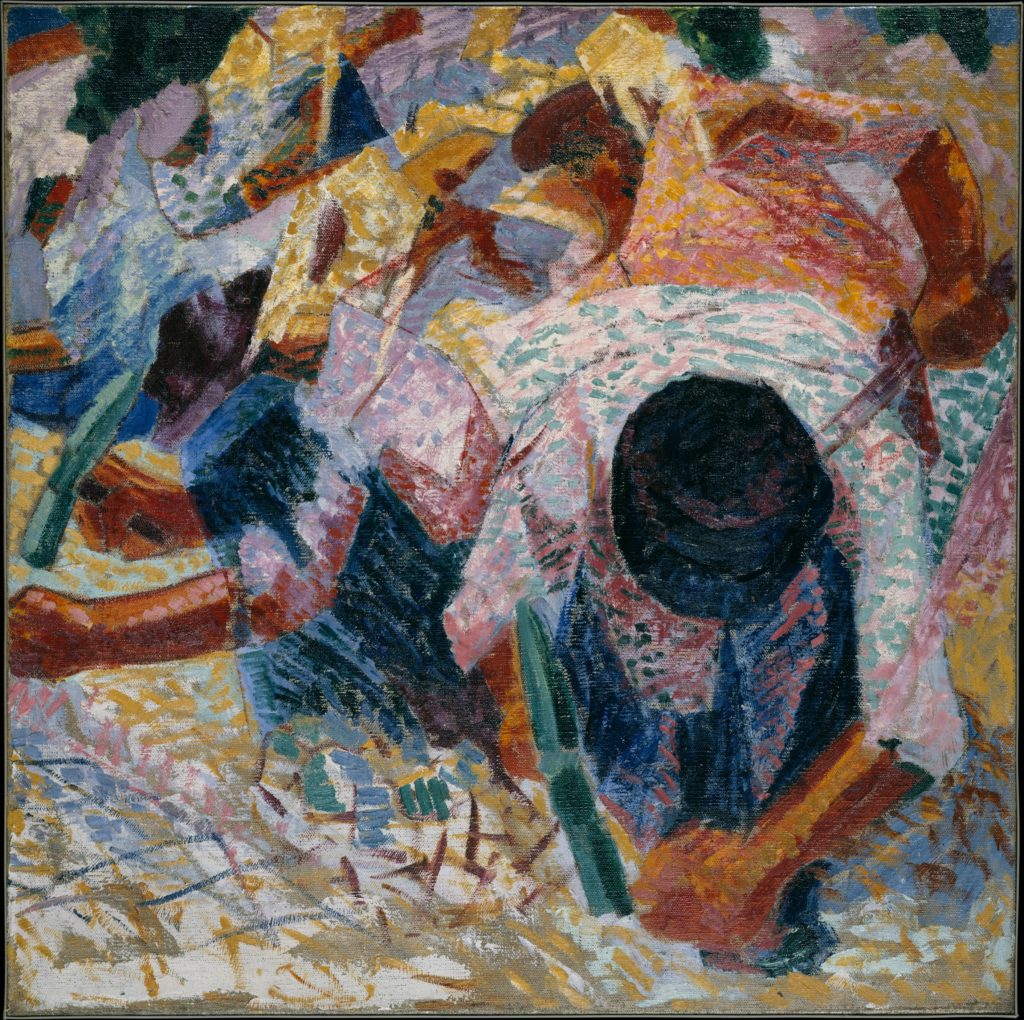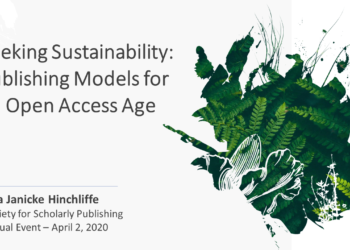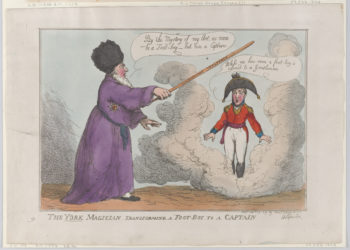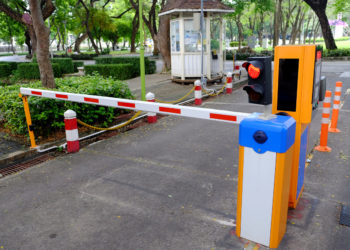Author’s Note: At the 2021 Charleston Conference, I was invited to speak as part of the panel: “Progress Through Partnership: The Dolly Parton Rule for Transformative Agreements.” The conversation took as its starting place the quip, “If you don’t like the road you’re walking, start paving another one!” My role was to provide framing remarks in advance of the presentations by other speakers — Mathew Willmont, California Digital Library; Sybille Geisenheyner, American Chemical Society; and Sara Rouhi, PLOS — who detailed the specifics of models they are working on. This is an edited version of my remarks.
Reflecting on the theme of “Paving a New Path,” I found myself deep into the literature on road pavements. It’s actually quite fascinating and “paving a path” turns out to be a very apt metaphor. We hardly think about the roads we drive on and yet they require intense planning and attention to detail. They are incredibly complex in their design and construction, which must take into account a wide range of conditions and context – geology, climate, weather, and planned usage, which itself includes predicting changing human behaviors and preferences, diversions, community planning, etc. The road built for Siberia is not the one built for the Galapagos, which is not the road built for South Carolina, at least not if you want the road to be functional, safe, and reliable for the future. We take roads – pavements – for granted. Well, except when they fail.

Road pavements are designed in layers. You may have observed this when encountering road construction. These layers serve the following objectives, at least according to the 598-page manual on “Geotechnical Aspects of Pavements” from the Federal Highway Administration of the U.S. Department of Transportation I found myself reading:
- Structural Capacity – providing a strong structure to support traffic loads
- Ride Quality – providing a smooth wearing surface
- Safety – providing a skid-resistant wearing surface
- Durability – preventing premature deterioration because of environmental factors
I think these map well to the considerations I see as we think about transformative agreements, both in the narrow sense of “read and publish deals” but also the broader sense of transforming the financial models of scholarly publishing and access.
How are we attending to questions of capacity to support the demand for publication outlets? What of the quality of the author and reader experience? As well as that of the editors, peer reviewers, etc.? What safeguards are in place to prevent fraud, misinformation, and the like in order to secure and support the safety of the system – the credibility and trustworthiness of science and scholarship? Are the transformative paths sustainable over time; are they durable?
To return to the notion of layers – in pavement these are generally conceptualized as subgrade, subbase, base, and surface. Most drivers are focused on the surface and the primary question of “will this take me where I want to go without damaging my vehicle or injuring the occupants?” Similarly, most scholars likely care little of the details of the contracts, policies, and financial frameworks that underlie the scholarly publishing system. But, as librarians and publishers, we have to attend to the full stack of layers and how they interact and build upon each other.
I won’t attempt a full listing of all of the considerations of pavement as a metaphor for the scholarly publishing system, but will suggest at least a few that I think are central to the current transformational moment and its demands for managing policies, timelines, financial models, and reporting requirements:
- First, I suggest we need more attention to Systems Thinking and Perspectives. It is too easy to focus on a part of the scholarly publishing system and imagine that–if we make one change–the impacts will be contained to just that change. Instead, we must lean into the challenge of thinking about the complete system and how it may respond. The complexities of the system mean that there are unintended and perhaps even undesirable consequences. They may have also been unexpected though I find that there is usually a Cassandra if you look even a little bit. What is the theory of impact for a given change and has it been comprehensively considered?
- Related to this big picture is, ironically perhaps, the nitty-gritty details, the Logistics. Exactly what must be done by who at which point in the publishing process for a given transformative agreement? Increasingly I am hearing librarians and publishers alike reflecting on how they had not realized the level of detailed attention and process adjustments these agreements would require. We have well-honed automated systems to authenticate people as authorized readers but almost all authentication of people as authors is currently done manually and depends on authors themselves understanding more about the technological workflows of publishing than we have ever asked readers to have about the technologies of access.
- I would also like to recommend increased attention to the Drivers of Change. These are great in number and variety and many are, if not opposed to each other, at least not well-aligned. Analysis of these is necessary if we are going to build the kind of partnerships being discussed today. It is easy to be carried along by rhetoric but calling something sustainable or equitable doesn’t make it actually sustainable or equitable. Such labels may not bear up under scrutiny. It is not that I want to regulate marketing copy, I appreciate the role of public relations. But, I do want us to look beyond labels to understanding whether the drivers of a given change and the proposed changes themselves are reflective of our priorities, regardless of what those priorities are or if I personally agree with them, because research on successful partnerships says that collaboration is effective when it is based on shared goals and understandings.
How do we lay down the layers of “pavement” that build up a quality scholarly communications system that is safe and durable and that meets the capacity demands of the scholars of today and, equally importantly, tomorrow?
Discussion
11 Thoughts on "Paving the Path: Considerations for Transformative Agreements"
Well said Lisa! But let us not forget that road design begins with consideration of the vehicles that are likely to be driven along the road. Horse and cart? Heavy duty long-distance hauler? Here in Ontario we have many unpaved sideroads that are infrequently used and provide good traction when snow-covered. Works fine! So readers come in many stripes. To what extent do publishers take this into account? Can the scattering of future Einsteins be catered for equally with dilettante readers who randomly dip? What safeguards are in place to prevent a publisher thinking that the economics of catering for the latter are better than catering for the former, among whom may be, for example, the Kariko’s who make possible mRNA vaccines? Whose time is more valuable? For whom should sifting, accessing and reading the relevant literature be optimized?
Let’s take the metaphor a little further. Everyone agrees on infrastructure, but look how many years and administrations it has taken to agree to repair the existing infrastructure in the United States. It seems just as likely that the financial models that sustain research could come from outside the United States government or our existing non profits. I think some of Europe is taking a lead, but there’s a long way to go. You’d think that in response to this pandemic we’d have some serious funding for reproducing existing studies, but I haven’t seen it yet.
I’d be interested in hearing more about your final sentence. Why would we think that?
Lisa,
I would have thought that a tipping point would have been at a point where people were desperately curious to know the outcomes of publicized studies are trustworthy, and given numerous stories during the pandemic about the unreproducibility of science, one would have thought it would be super, amazing publicity for some Gates Foundation to fund the top 200 Covid cited studies to see if other researchers were able to come up with the same results. “Gates Foundation proves 199 or the top 200 Covid studies were all reproducibility” sounds like amazing press to me. Reproducibility would have to be one of the main layers of your pavement, do you agree?
Reproducibility is an important component of science, yes of course. I was asking why you thought the pandemic per se would have prompted such attention since it doesn’t really seem like that would speed up the science progress needed to address the pandemic and addressing the pandemic was all about speed?
Here in New England, as we await the first snowfall of the year, Lisa’s piece reminded me that it is time to prepare to drive in “frost heave” country! (For an accessible summary of the phenomenon, see https://northernwoodlands.org/outside_story/article/frost-heaves ). The issue is a perennial one — economics are presumed to make it impossible to create the paving layers needed in a cold climate with loam soil, and every year the inevitable scenarios play out — frost heaves and potholes. Individual drivers have learned to live with it, and to bear the burden of the effects, much as librarians and readers have done with license agreements. Perhaps Lisa’s metaphor can help us reflect on roles played in a dysfunctional environment, and how to direct our change efforts. If we see publishers as paving companies, and state/local governments as the ones who specify outcome expectations for our highway and road paving contracts, some additional pressure points in our advocacy efforts may come to light. Meanwhile, I’m getting my snow tires ready.
Ironically, the ESAC Initiative has just today published three exhaustive resources developed by and for the library and library consortium community that will really help with some of those “nitty gritty” details! See their Reference Guide for Transformative Agreements, the “How Transformative Is It?” spectrum of OA transformation drivers, and 2021 Enhancements to the ESAC OA Workflow Recommendations available here: https://esac-initiative.org/category/news/
I was very interested to see those appear in my inbox today, Colleen! Useful indeed.
interesting analogy
Ultimately authors have very little interest in transformative agreements. They dont understand the term and to them its “just something their librarian helps them with”.
Transformative agreements dont drive where someone publishes but it does make an authors life a little easier if one is in place. How publishers sell/pitch/promote transformative agreements (starting with a new name!) is a huge part of the challenge.



